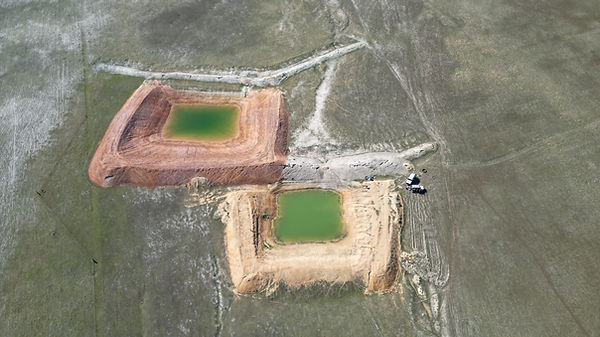WaterSmart Dams - Making Dams Work Again

This two year project aims to develop knowledge and water planning tools for farmers who need their dams to work in all years, and be able to make water investment decisions with confidence.
The project will involve 12 core demonstration sites, building farm-based water planning tools, workshops, field days and industry training. The project will investigate solutions including renovating existing dams, building new dams, and implementing evaporation suppression and runoff technologies.
The GGA through the South-West WA Drought Resilience Adoption and Innovation Hub, will collaborate with the Department of Primary Industries (DPIRD) and the University of Western Australia (UWA), leveraging their existing work and prior investment in this field as well as four grower group project partners including Compass Agricultural Alliance (Darkan), Southern Dirt (Kojonup), Merredin and Districts Farm Improvement Group (Merredin) and the Fitzgerald Biosphere Group (Jerramungup).
WaterSmart Dams builds on the existing WaterSmart Farms program – a collaborative DPIRD designed program researching sustainable groundwater supply options using on-farm desalinisation technology.
This project is jointly funded through Australian Government’s Future Drought Fund (FDF) and the Department of Primary Industries and Regional Development (DPIRD).
Compass Ag SmartDam Champions
Paul and Janelle South
Darkan growers, Paul and Janelle South are assessing how harvesting sub-surface water in a V drain catchment affects water quality. The site aims to demonstrate how water can be extracted from underperforming waterlogged ground during the winter months and used productively. Using a V drain capture, the site aims to harvest and run this unproductive water to the dam to be stored for sheep during summer.
James and Melita Jefferies
Duranillin growers, James & Melita Jefferies are measuring evaporation in dams which provide domestic and livestock water supply on their home farm. They have built a second enlarged upper dam adjacent to an existing dam aiming to compare the two. A weather station has been installed on the side bank of the upper dam along with a floating pontoon to quantify evaporation factors.
Michael and Steven Goss
Michael and Steven’s dam has a dual graded catchment system, which is why it was picked as a demonstration site for the WaterSmart Dams project. At this site it is easy to compare best practice catchment management (grading, spraying weeds etc) with the common ‘do nothing’ approach to assess how these factors influence water runoff.
Podcast
WaterSmart Dams
Compass Agricultural Alliance (CAA) and Icon Agriculture collaborated with agricultural communications company AGSOCIAL to produce a podcast series focusing on water infrastructure on farm. Shane Plank from Darkan Earthmoving was approached to provide the technical knowledge of water management on farm. From this, six episodes were created each dedicated to sharing practical tips, expert advice, and innovative techniques for WaterSmart farming.
Leaky Dam Products
Fact or Fiction?
One key area of interest from Compass Ag members was the possibility of repairing leaking dams. There are several current techniques, such as relining dam walls with clay or bentonite and there are some products on the market which are supposed to seal leakage. As poart of the WaterSmart Dams project, we have teste4d Dam Stop Leak® and Aqua-Tech Dam & Pond Sealer® over six different properties to establish if these commercially available leakage products work and have a role in water management on farm as a cheap solution.
























